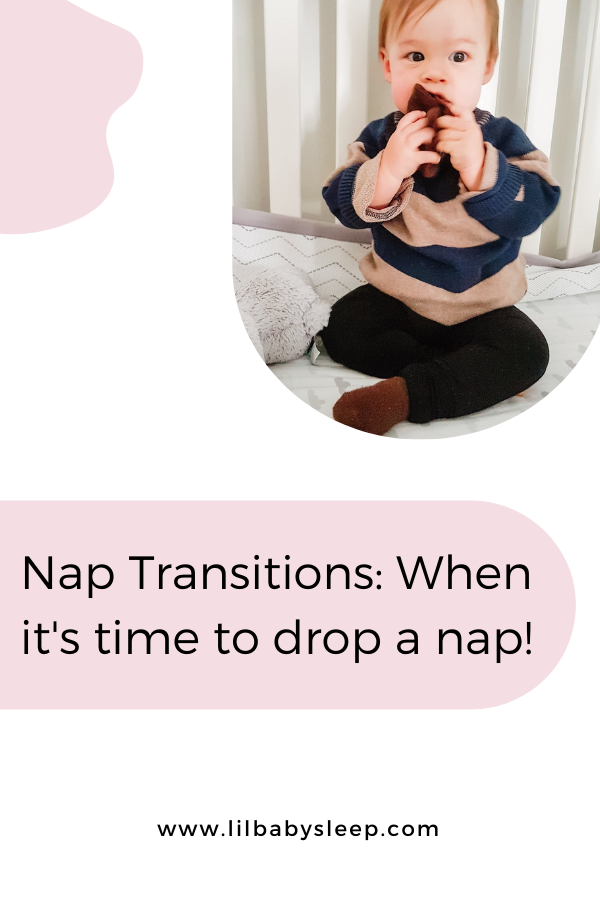Babies are funny. Just as you think you have their schedules figured out and you begin getting the hang of this nap thing. They go and grow, their sleep requirements change and the nap games begins again! Don’t get too comfortable mama, I’m about to pull a fast one on you!
Changing nap requirements are sometimes not easy to detect. But mamas don’t stress, if you know what to expect and to look out for, then nap transitions can go smoothly.
Here’s what you should know and prepare for:
As babies grow wake times become longer (we need to adjust these each month). A baby’s daytime sleep needs change, they need more awake time to build sleep debt.
In order to keep the same bedtime and to avoid naps interfering with night time sleep, which is more restorative, we need to adjust schedules which ultimately means dropping a nap.
Standard Nap Transition Ages
3-4 months old - 4 to 3 naps
6-9 months old - 3 to 2 naps
15-18 months old - 2 to 1 naps
3-4 years old - 1 to no nap
These are key age ranges when we start to see the need to drop a nap.
Three signs your baby is ready to drop their nap
Consider age AND if:
1) The last nap of the day is too late and interfering with bedtime. You notice that where before your baby used to take minutes to fall asleep, now they are fighting bedtime. They may cry or lie in their crib and not seem sleepy. Baby might just need a longer wake time before bedtime. You want to keep bedtime the same so ditch the last nap and allow baby to get that full awake time so they go down easier.
2) You're starting to experience early morning wake ups like all. the. time. One cause of early morning wake ups is too much daytime sleep. If your baby is sleeping too much during the day, this will take away from sleep at night. Ask me for a chart of your baby’s daily sleep needs by age.
3) Naps are falling apart. Your baby doesn’t seem tired for naps and when they take them they are short. This is an indication that their wake window needs to be lengthened. This is just because they might not have enough sleep drive to get them those longer, more restful naps.
If you are in the age groups mentioned above or nearing this age group and you notice these signs, it might be time to drop that nap!
Be careful not to mistaken one of these signs for anything else, for example: there are many reasons why a baby might have early morning wakings. Explore all possibilities before adjusting daytime schedules.
Don’t try to transition if baby is not ready or they will become severely overtired and it will cause chaos in your schedules. For example, at 12 months babies go through many developmental leaps and might skip a nap here or there. That is normal, they might even skip naps for a week! but stay consistent with your schedule as these naps will come back and at 12 months old babies are often NOT ready to transition to 1 nap at day, their wake windows are simply not long enough yet.
If they are starting daycare, talk to your daycare provider about keeping your two nap schedule, they should make arrangements for this until your baby is READY.
Now all babies are different and depending on level of activity, temperament and lifestyle might need slightly more or less sleep. Find YOUR nap sweet spot but consider that as your baby matures so will their sleep requirements.
So here’s the truth (you know I always have to tell you the truth!). When babies are younger dropping from 5-4 naps or even 4-3 naps is easy. As baby’s grow it becomes more difficult. Be prepared of a tired, cranky baby and some sleep hiccups while this transition happens.
My next blog post will walk you through how to make these transitions easy on everyone!
If you need an age appropriate schedule for your new naps! Send me a message.
Happy Napping!

















